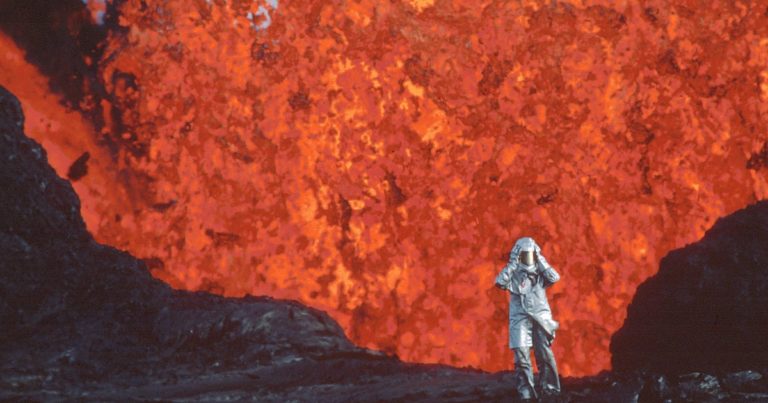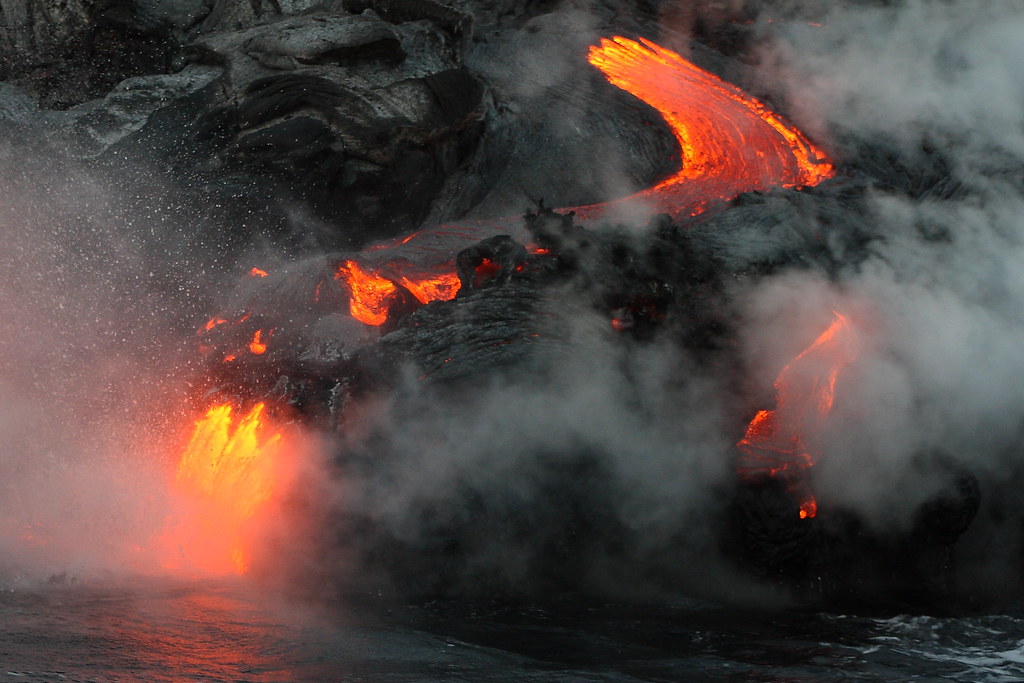
Fire of Love is a documentary film, directed, written, and produced by Sara Dosa, that had its world premiere at the 2022 Sundance Film Festival — where it won the Jonathan Oppenheim Editing Award in the U.S. Documentary category. It also also screened at South by Southwest and it is currently part of the EarthX Film Festival.
Narrated by Miranda July, Fire of Love tells a story of primordial formation and eradication, following a daring French volcanologist couple through their impetuous quests. They chase eruptions and document their discoveries, all for the sake of love for each other and volcanoes.
The magic of synchronicity is captured in the words that describe the serendipitous encounter: “A set of forces collide inside this planet, throughout the enormity of geologic time to trigger one instant: an eruption that forever reshapes the Earth and across humanity’s two million years two tiny humans are born in the same place, of the same time and they love the same thing. And that love moved us closer to the Earth.”

Katia and Maurice Krafft met in 1967 on a bench outside their university of Strasbourg, they reconnected at the screening of a film about volcanoes and this common passion drew them together and kept them united for an entire lifetime. They grew up in postwar Alsace and were both independent individuals who did not align with traditional career paths. Katia and Maurice were mavericks who took refuge in the mysteries of the natural world. They had a fire inside them that amalgamated and burst out into the most glorious volcanologist power couple in the history of mankind. They never left each other’s side, not even in death: the Kraffts departed in unison when they were hit by a pyroclastic flow at Unzen volcano in 1991.
Director Sara Dosa gives an effusive and explosive pace to her storytelling. The film has some moments of animation sprinkled across a mesmerising array of original black and white and coloured footage. The archival material ranges from the images that the Krafft couple shot firsthand, to their television appearances where they would describe their extraordinary enterprises on talk shows. Sara Dosa craftily uses Ennio Morricone’s The Ecstasy Of Gold to exalt the Kraffts’ spirit of adventure.
They had some differences, but were united by their love for the ruptures in the crust of our planet. Photography was the means to remember the moments they spent together with their rocky companions. Katia was a geochemist focused on the details and the interconnectedness of the world, whereas Maurice was a geologist who was attracted by the grandiose. One would capture instants with the click of her camera, the other would chase motion through 24 frames. Maurice did not consider himself a moviemaker, but a wandering volcanologist forced to capture on camera his work: making films and publishing books would finance the following expedition. If rocks could provide means of subsistence Katia and Maurice would have probably done without filming.
What they captured on camera was not a science fiction picture, but a chronicle of volcanoes and they would underline how each one had a different personality. Maurice would even compare them to sick people, often shivering overcome by a feverish temperature rise.

Katia and Maurice spent over twenty years together visiting more than one hundred and fifty volcanoes. Some would say their fascination for danger made them flirt with death, but their free-thinking vision was very simple: “we have but this one short life, then we return to the ground.” Their life was a Russian roulette drawn by the magnetism of the unruly cycle of volcanic destruction for creation.
This overbearing power of plate tectonics never ceased to galvanise Katia and Maurice. The Kraffts envisioned the minuteness of humans in contrast to the majesty of nature, that was expressed through the volcanic force.
They were in synch with each other. The two favoured a brief but intense existence as opposed to a long and monotonous life. Neither one reached their middle age, but their experiences were of centenarians. Katia and Maurice were not afraid of raising the bar: they decided to move past the the red magmatic volcanoes that produced effusive lava flows, to venture into the explosive grey volcanoes that created deathly clouds of ashes. Their mind was lucid in making reckless choices for the sake of discovery.
Theirs was a science of observation and they lived by the rhythm of nature on the edge of the abyss. But it was a calculated risk. As Nietzsche put it: “A fool is someone who has lost everything but his reason.”
Katia and Maurice devoured each myth about the wonders of our planet, to discover what would make the Earth’s heart beat. Their volcanic wanderlust brought them together to share an incandescent love that combusted into a scintillating life experience. In line with the Krafft philosophy, Fire Of Love is a testament to mineraloid matter: the silent witness of how our planet and its living beings evolve, looking upon what has happened and what is yet to come.
Final Grade: A

